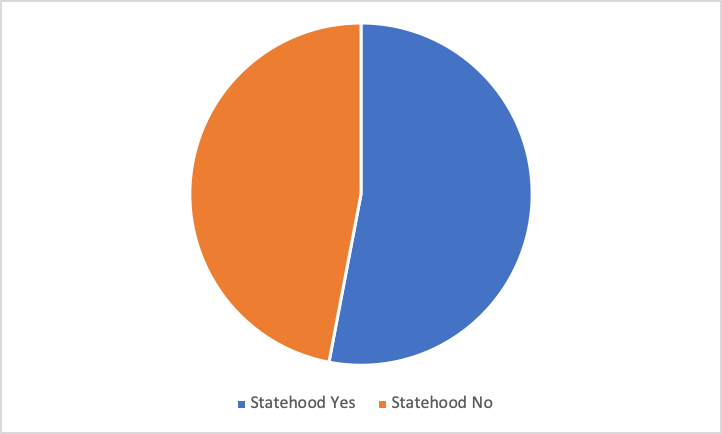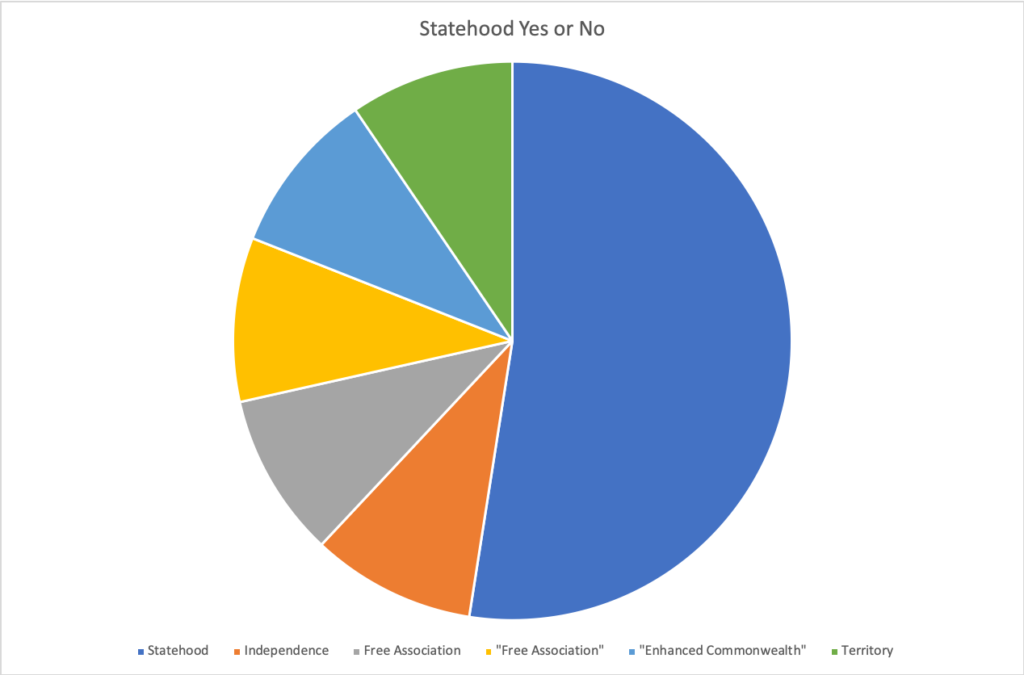There were lots of candidates on the 2020 ballot for governor and resident commissioner. With six candidates for governor and five for resident commissioner, the winners got less than 50% of the vote.
The big question of statehood yes or no might seem to be a simple choice between two options: statehood or not. 53% chose statehood — a clear majority, and 47% chose not statehood. But the chart below isn’t the most accurate way to show the results.
What did a “No” vote mean?
People voting “No” on statehood actually had five different things in mind:
- continued territory status
- independence with a Compact of Free Association
- independence without a Compact of Free Association
- a different definition of “free association” which the federal government has rejected
- an impossible “enhanced commonwealth” status, which the federal government has also rejected
That means that the chart below — even though we have divided the No section into five even parts, which would not be likely — is a more accurate picture of the vote:
The left side shows all the different things “No” voters might have had in mind. The size of each segment would be different if we knew what “No” voters were thinking, but each one is much smaller than the “Yes” votes for statehood.
What did a “Yes” vote mean?
The 2020 vote was not just a matter of members of the statehood party choosing statehood. True, both the new governor and the continuing resident commissioner are statehood party candidates. But statehood got more votes than either of those candidates.
The new political parties fielded candidates who were statehood supporters, too. But even counting their votes, we can see that statehood was more popular than any of the candidates who won. “Yes” had the most votes of anything on the ballot.
What does a “Yes” for statehood mean? It means a vote for statehood. States have rights and responsibilities laid out in the U.S. Constitution. We can look at the 50 current states and see what it means to be a state. There is no mystery there.
We can also see that the 32 former territories which have become states are more prosperous than they were as territories. Many of them had to work for a long time to become states, but every territory that has requested statehood has become a state.
It is time for Puerto Rico to do the same. The new Congress has been sworn in. Contact your legislators and let them know that statehood for Puerto Rico is a priority for you.









No responses yet